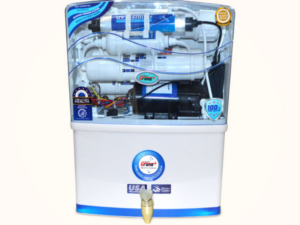Stages of water purification system
Drinking water, as well as consuming filtered water, is essential for good health, but having access to clean water is a pipe dream in this day and age. The water purification system comes into action at this point. Water purifiers will eliminate germs, bacteria, lead, and other impurities from your water while also regulating the pH. There are several stages of water purification. In this article, we will talk about the stages of the water purification system.
Water treatment has a full impact on the safety of drinking water. The water must be tested to ensure it meets government criteria for safe drinking water. Compliance with these standards is critical to ensure water is properly filtered and has a positive impact on the community. essential to the health and safety of a community. It is crucial to understand the stages of water filtration.
The stages of the water purification system
Aeration
The water is aerated by bubbling compressed air through perforated pipes after being collected in a large aeration tank. Bad odors and CO2 are removed by ventilation. It also removes metals like iron and manganese by causing them to precipitate as their respective hydroxides.
Screening
A filtration system is used to purify water from lakes, rivers, or groundwater. This filtration keeps major natural contaminants out of the water. Anything from wood to fish can be used. the soil acts as a natural sieving process in itself.
Coagulation
Coagulation introduces positively charged chemicals into the water. The positive charge in water destroys the negative charge on dirt and other suspended particles. The particles combine with the chemicals, creating slightly larger particles. Certain classes of salts, aluminum or iron are common compounds used at this stage.
Flocculation
In this process, flocculation gently mixes the water to create larger, heavier particles Known as flocs. During this stage, water treatment companies often add additional chemicals to aid in floc formation.
Sedimentation
Sediment refers to the flakes and soil particles that sink to the bottom of the storage tank. During this process, both the sediment and the water end up in a settling tank. Sedimentation tanks are designed to slow the flow of water to allow the suspended matter to settle more easily. The heavier floc particles sink back to the bottom of this basin and remain there until they are removed.
Filtration
Once the flakes settle at the bottom of the pond, clean surface water is filtered to remove any remaining particles. During the filtration process, clean water goes through filters with different pore sizes and materials (e.g. sand, gravel, and carbon). Activated carbon filters also remove unpleasant odors.
Disinfectation
Finally, disinfectants are used to clean the filtered water. For example chlorination. In the water, a disinfectant kills pathogens and other microorganisms. After disinfection, the water is pumped to an upper tank for house distribution.
Depending on the quality of the spring water entering the treatment plant, the water can be treated differently in different areas. Most of the water entering the treatment plant is surface or groundwater.
Because lakes, rivers, and streams contain more sediment (sand, clay, silt, and other soil particles), germs, pollutants, and toxins than groundwater, they require more treatment and filtration.
Water Purifiers for Domestic Use
Water in Bangladesh is so polluted that everyone needs a water purifier at home. In this case, RO water purifiers are the best option. They are basically mini home water treatment units.
The steps of an RO water purifier are-
- Sediment pre-filter
- Carbon pre-filter
- 2nd carbon pre-filter
- RO membrane
- Polishing filter
There are 3-stage, 4-stage, and even 5-6-stage reverse osmosis purifiers, but the above stages are mostly found in every type of reverse osmosis purifier.
Here are some big brands of RO purifiers. There are different types of water purifiers for home use. Here you can check the water purifier price in Bangladesh at an affordable cost:
Pureit
Pureit introduces the new Marvella Slim RO+UV+MF, featuring superior 7-stage filtration and a mineral cartridge that enhances clean water with minerals. All water goes through the RO system, ensuring that clean and dirty water don’t mix. Only RO can remove dangerous compounds like lead, mercury, and other heavy metals. It enriches the water by adding essential minerals such as calcium and magnesium. So is the water filter price in Bangladesh which is natural pure around tk21,500.
Kent
KENT water purifier, the house of purity, the most trusted brand of health and home appliances, offers you unique solutions to protect your family from waterborne infections, airborne diseases, pesticides and chemicals in fruits and vegetables, dust, and mold on mattresses. They have a very affordable price range starting at 20,000 tk.
Ultima
ULTIMA Royal RO Plus UV Water Purifier is the best wall-mounted reverse osmosis system for medium and large families, with real-time TDS and a beautiful design. 100 GPD cleaning system (378 L/day) and a storage capacity of 12L. The water purifier price in Bangladesh starts from Tk.25,000.
Eureka
Eureka prime guarantees that the water is perfectly drinkable. By removing chlorine and bacterial contaminants, they give drinking water a better taste and smell. They use reverse osmosis technology in 5 filter stages. Their water filters filter lead from drinking water before it is consumed, preventing the dangerous chemical from entering the body. The cost of a water purifier starts from 11,000 tk.
Walton
The Walton WWP-RO12L filters water and removes dust, pathogens, odors, dissolved solids, and airborne particles using reverse osmosis technology. It also has a chlorine and pH control function. This filter has a capacity of 12 liters and cleans the water in five stages. With only tk 9000 the price is really fair.
- https://osdigitalworld.com
-

Buying Guide for Water Purifiers-8e160972 - on

